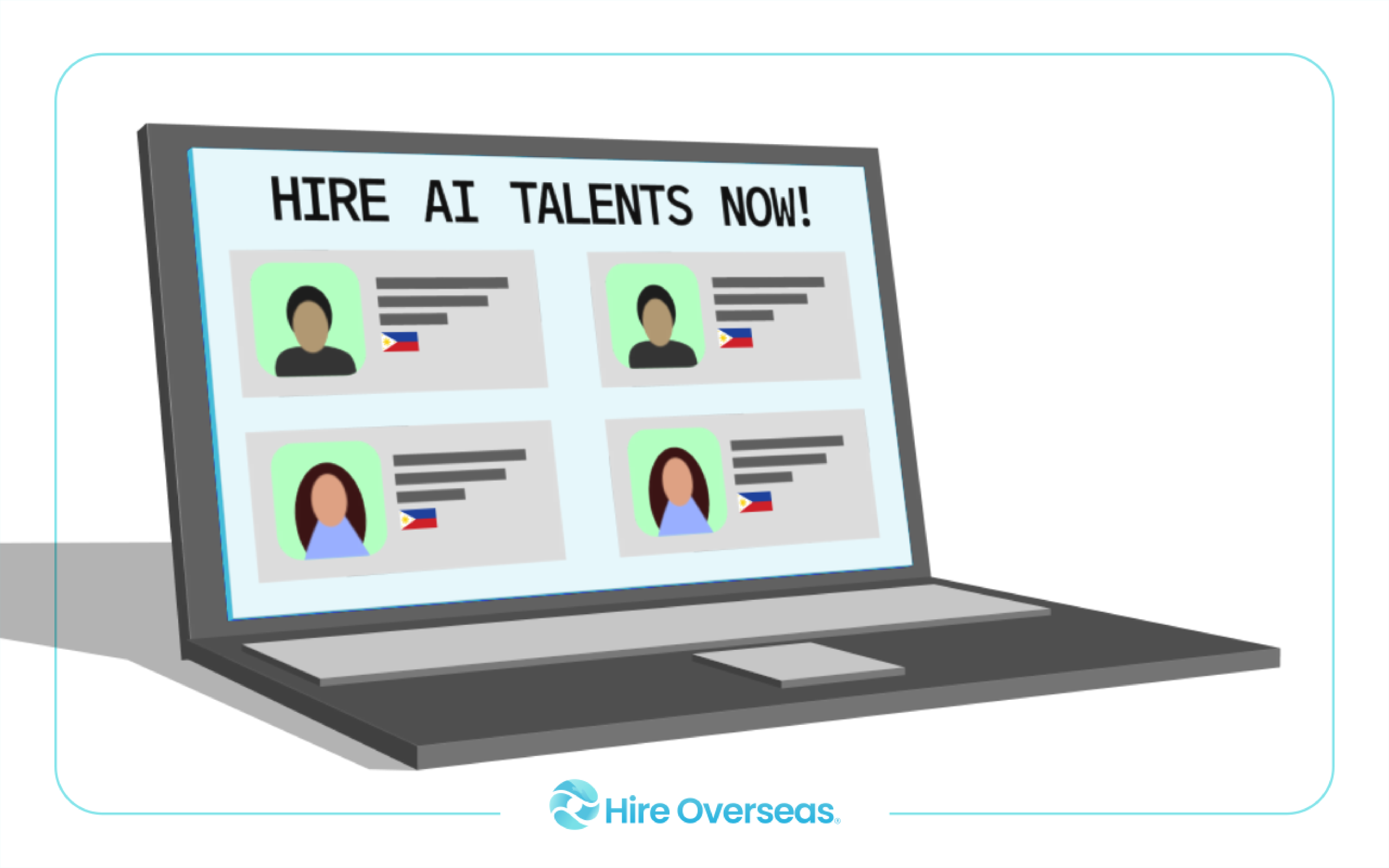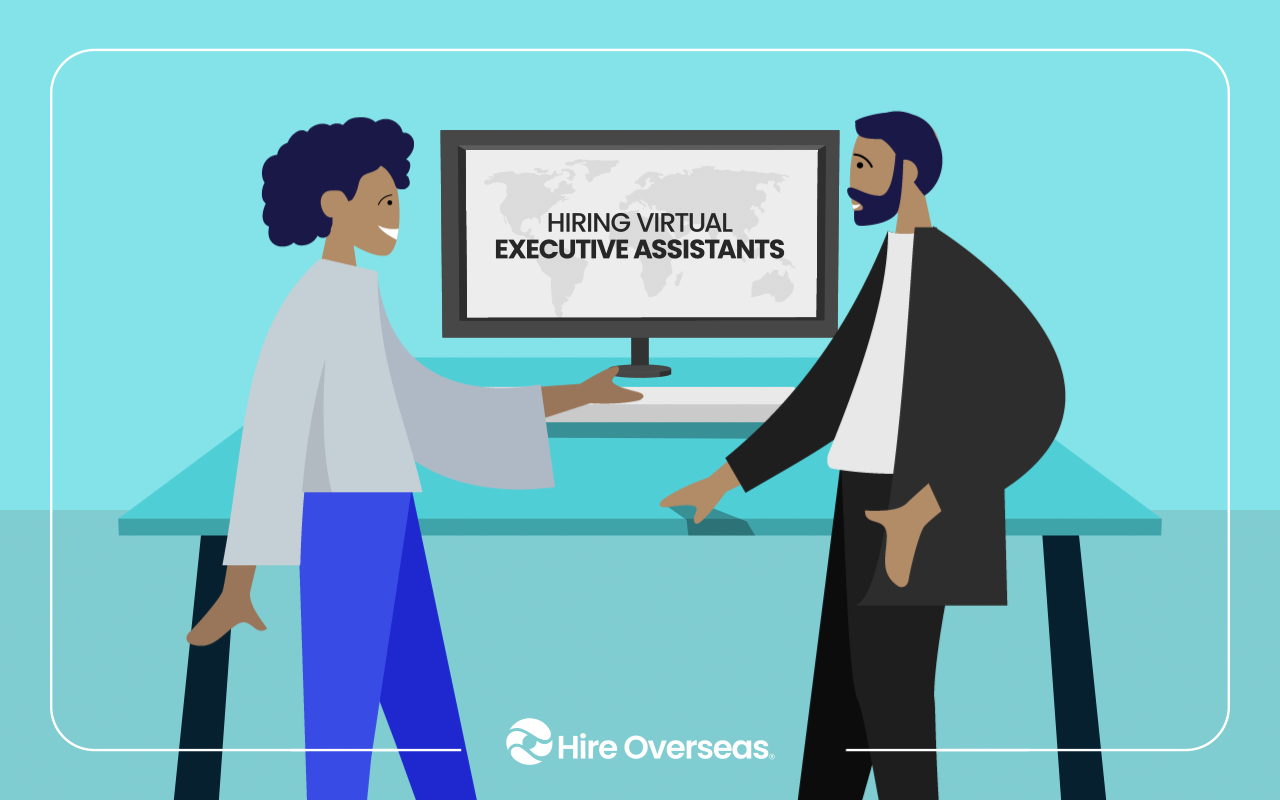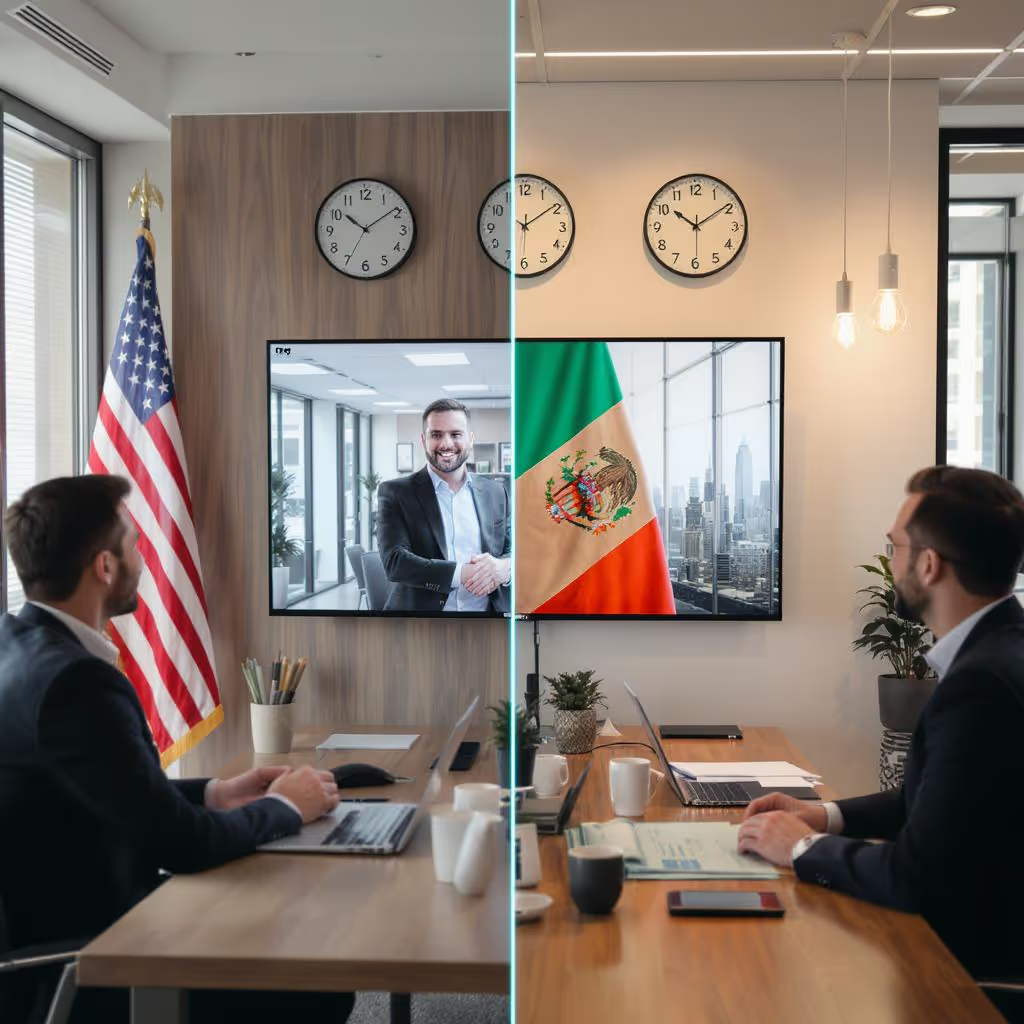How to Hire Remote Employees: The Ultimate 2025 Guide to Building a Global Team

Knowing how to hire remote employees is now a critical advantage for growing companies. Remote hiring gives you access to global talent, lowers overhead costs, and allows you to scale teams quickly without being limited by location. But building a strong remote staff hire strategy takes more than posting a job online—it requires a clear process, the right tools, and expert support.
This complete 2025 guide walks you through every step, from budgeting and sourcing candidates to compliance and onboarding, and shows how Hire Overseas helps you hire dedicated remote staff efficiently and cost-effectively.
Why Hire Remote Employees?
Before diving into how to recruit remote workers, it’s important to recognize why building a remote team can transform your business:
Access to Global Talent
Remote hiring removes geographic barriers, enabling you to tap into top professionals worldwide. This opens the door to hire remote foreign employees with specialized expertise that might not be available locally.
Cost Savings
By hiring from regions with competitive rates, companies can reduce overhead costs like office space and often save on salaries, making a remote staff hire a financially strategic move.
Flexibility and Scalability
Remote work makes it easier to scale your team based on project demands. You can hire dedicated remote staff as needed, expanding or downsizing without the constraints of traditional hiring.
Increased Productivity
Research shows remote employees often perform better due to fewer office distractions and the ability to create personalized work environments. This means hiring remote employees can lead to a more focused and efficient workforce.
Cost of Hiring Remote Employees (and How to Budget)
When planning to hire remote employees, it’s important to understand the potential costs involved. While hiring remotely requires budgeting for several factors, it often remains far more cost-effective than hiring locally due to lower salaries, reduced overhead, and access to competitive talent markets.
1. Salaries Across Different Regions
The biggest variable is compensation. Depending on the role and location, salaries for dedicated remote staff can range from 40–60% less than hiring in the US, UK, or Australia. For example, a skilled software developer or accountant in the Philippines may cost a fraction of a local hire while offering the same expertise.
2. Payroll and Currency Management
Managing payroll for international employees involves currency conversions, tax deductions, and compliance with local laws. These are added costs, but they are minimal compared to setting up a local HR and payroll system. Hire Overseas takes care of payroll and compliance, making it easier to hire remote foreign employees without unexpected fees.
3. Compliance and Legal Requirements
Labor laws and tax regulations differ by country. Drafting compliant contracts and handling legal obligations are essential costs of hiring remotely. However, they are predictable and far lower than the long-term expenses of local employment. With Hire Overseas, these costs are bundled into a transparent package.
4. Equipment and Setup
Providing laptops, headsets, or software licenses for your remote staff hire can add to initial expenses. However, these are one-time investments and are still more affordable than maintaining office space and utilities for local employees.
5. Recruitment and Onboarding
Posting jobs, screening candidates, and onboarding are part of the hiring budget. With Hire Overseas, you get access to a pre-vetted global talent pool, reducing recruitment costs and speeding up the time-to-hire compared to traditional local hiring.
Even with these factors, companies typically save 30–70% versus hiring locally when working with an experienced hiring partner.
How to Hire Remote Employees: A Step-by-Step Guide
Hiring remote employees isn’t just about posting a job online—it’s about building a structured process that ensures you attract the right talent, assess them effectively, and set them up for success. Whether you’re looking to hire dedicated remote staff or assemble an entire remote team, following a clear step-by-step plan will save time, reduce turnover, and help you scale confidently.
1. Clearly Define the Role and Expectations
Start by creating a detailed job description that outlines core responsibilities, required skills, and performance metrics. For a successful remote staff hire, highlight traits like self-motivation, communication skills, and the ability to work across time zones.
2. Select the Right Hiring Approach
Choosing the right channels to source talent is a critical step in mastering how to hire remote employees. The platforms and networks you use can determine the quality of candidates you attract, whether you’re assembling a small team or aiming to hire dedicated remote staff at scale.
Remote Job Boards
Websites like We Work Remotely, FlexJobs, and Remote OK specialize in hiring remote employees for full-time and part-time positions. These platforms attract experienced professionals actively seeking remote work.
Freelance Marketplaces
Platforms such as Upwork and Fiverr are excellent if you need to hire employees online for project-based or short-term roles. They also offer tools to manage contracts and payments.
Professional Networks
LinkedIn is a powerful tool to recruit remote workers. Use advanced search filters to find candidates by skill, location, or industry, and promote your job postings to a global audience.
Staffing and Outsourcing Agencies
If you want a seamless way to hire a remote team, agencies like Hire Overseas handle sourcing, vetting, and compliance for you. They specialize in connecting businesses with top-tier international talent, making them a reliable partner for any remote staff hire.
Global Talent Hubs
Regions like the Philippines, South Africa, and Latin America are known for skilled professionals available at competitive rates. Partnering with experts who know how to hire remote foreign employees in these markets can save you time and ensure you get the right fit.
Pro Tip: Consider Hire Overseas for a faster, hassle-free way to find and hire remote workers. As your one-stop solution for building a reliable global workforce, we make hiring simple and effective. Talk to a Hiring Expert today and start growing your remote team with pre-vetted, highly skilled professionals.
3. Screen and Assess Candidates Thoroughly
Remote hiring requires more than just a resume check. Use:
- Video interviews to gauge communication skills.
- Skill assessments and trial projects to evaluate abilities.
- Cultural fit assessments to ensure your remote team hire integrates seamlessly.
-
4. Handle Legal and Compliance Early
Before onboarding, ensure you comply with:
- International labor laws.
- Tax obligations and worker classifications.
Contracts protecting intellectual property when you hire dedicated remote staff overseas.
5. Build a Seamless Onboarding Process
A strong start sets the tone for success:
- Provide clear guidelines and documentation.
- Introduce collaboration tools like Slack or Asana.
Schedule regular check-ins to integrate your new remote employees into the team culture.
If you want a faster, hassle-free way to access skilled global talent, Hire Overseas is your one-stop partner to hire remote workers. From sourcing to onboarding, we handle everything so you can focus on growing your business.
Smart Interview Questions to Hire the Right Remote Employees
Remote hiring requires more than checking technical qualifications—you also need to assess if candidates can excel in a distributed work environment. Asking focused questions ensures your remote staff hire will have both the skills and the mindset to succeed.
Core Questions for Any Remote Role:
1. How do you structure your day and stay productive when working independently?
- Evaluates self-management, critical for any hire dedicated remote staff position.
2. Which tools have you used to collaborate with remote teams?
- Checks digital adaptability and readiness for a remote team hire setup.
3. Describe a challenge you faced while working remotely and how you solved it.
- Reveals problem-solving skills and remote-work experience.
4. How do you handle working across different time zones?
- Essential when you hire remote foreign employees for global operations.
5. What keeps you engaged and connected when you’re not in a traditional office?
- Helps gauge cultural fit and long-term retention.
Role-Specific Questions:
For Software Developers & IT Specialists
1. Can you walk us through a complex project you completed remotely and how you collaborated with the team?
2. How do you manage code reviews and version control when working asynchronously?
For Designers (Graphic, Web, UI/UX)
1. What process do you follow to gather feedback on design iterations remotely?
2. Which tools help you present creative work to distributed teams?
For Virtual Assistants & Admin Staff
1. How do you prioritize tasks when managing multiple executives remotely?
2. What systems do you use to keep schedules and communication organized?
For Accountants & Bookkeepers
1. What tools do you use to ensure secure handling of financial data remotely?
2. How do you manage reporting deadlines across different time zones?
For Customer Support Teams
1. How do you maintain customer satisfaction when handling tickets remotely?
2. What’s your process for escalating issues to other team members online?
Tools to Make Remote Hiring Easier
Choosing the right tools can make a huge difference when you hire remote employees and manage them effectively. These platforms help streamline hiring, improve collaboration, and keep your distributed team running smoothly.
HR Platforms
Solutions like Deel, and Remote.com, simplify the complexities of hiring internationally. They handle contracts, tax compliance, and payroll, making it seamless to hire remote foreign employees without worrying about legal headaches.
Job Boards for Remote Talent
Specialized job boards such as We Work Remotely, FlexJobs, and Remote OK attract professionals actively seeking remote work. These platforms are ideal for sourcing candidates when you want to hire dedicated remote staff or build a remote team hire quickly.
Candidate Assessment Tools
Platforms like Codility help you evaluate technical skills and problem-solving ability before the interview stage. Using assessment tools ensures you only advance qualified candidates, saving time and improving the quality of your hired remote team.
Video Interview Platforms
Tools such as Zoom allow you to conduct structured video interviews and record sessions for review. This is essential when you need to recruit remote workers across different time zones and ensure consistent evaluations.
Applicant Tracking Systems (ATS)
Using ATS platforms like Workable helps you manage applications, schedule interviews, and streamline communication with candidates—all in one place. This keeps your remote staff hire organized from start to finish.
Challenges You May Face When Hiring Remote Employees (And How to Overcome Them)

Hiring remote talent offers huge advantages, but the process itself comes with unique obstacles. Addressing these challenges early ensures you build a high-quality remote staff hire right from the start. With Hire Overseas, many of these hurdles can be eliminated through their end-to-end recruitment support.
1. Finding Qualified Candidates Globally
With access to a worldwide talent pool, it can be overwhelming to identify the right fit.
Solution: Hire Overseas connects you with pre-vetted, highly skilled professionals from top global markets. Their proven sourcing process ensures you can hire dedicated remote staff quickly without sifting through hundreds of unqualified applications.
2. Verifying Skills and Experience
You don’t get the benefit of in-person interviews or trial days, making it harder to assess a candidate’s true capabilities.
Solution: Hire Overseas conducts comprehensive skills testing, background checks, and structured interviews on your behalf, so every candidate presented is qualified and ready to perform in your remote team hire.
3. Evaluating Cultural Fit Remotely
Without face-to-face interaction, gauging whether someone will mesh with your team can be difficult.
Solution: Hire Overseas screens candidates for communication style and cultural alignment, ensuring your remote staff hire integrates seamlessly into your company’s values and workflows.
4. Handling Payroll During the Hiring Stage
Bringing on international employees isn’t just about contracts—it also involves managing payroll in multiple currencies while staying compliant with each country’s labor laws.
Solution: With Hire Overseas, you don’t have to worry about setting up complex payroll systems or navigating foreign tax regulations. We manage payroll and ensure compliance across borders, making hiring remote foreign employees simple, accurate, and risk-free.
5. Building a Streamlined Recruitment Process
Without a clear framework, the hiring process for remote employees can drag, causing you to lose top candidates.
Solution: Hire Overseas offers a fully structured recruitment pipeline from job posting to screening, testing, and onboarding so you can fill roles faster and provide a consistent candidate experience.

Best Practices for Managing a Remote Team After Hiring
Hiring is just the first step—retaining and empowering your remote employees ensures long-term success. Once you’ve mastered how to hire remote employees, focus on these best practices to keep your team engaged and performing at their best:
1. Set Clear KPIs and Expectations
Remote employees thrive when they know what success looks like. Define measurable KPIs, deadlines, and deliverables. This clarity helps your hire dedicated remote staff work independently while aligning with company goals.
2. Encourage Open Communication and Feedback
Create a culture where feedback flows both ways. Regular check-ins, virtual town halls, and anonymous surveys allow you to address issues early and keep your remote team hire motivated and engaged.
3. Build a Strong Company Culture Despite the Distance
Culture is the glue that holds distributed teams together. Celebrate wins, hold virtual team-building activities, and reinforce company values. When you hire remote workers, fostering a sense of belonging is critical to retention and productivity.
4. Invest in Professional Development
Offering training and upskilling opportunities shows commitment to your employees’ growth. This not only increases loyalty but also ensures your remote staff hire continues to bring value as your business evolves.
5. Use the Right Tools for Ongoing Management
Leverage performance management systems, time-tracking software, and engagement platforms to maintain accountability and team cohesion over time.
Want to dive deeper into leading distributed teams effectively? Check out our full guide with exclusive Hire Overseas tips: Managing Remote Teams: How to Lead and Support Your Distributed Workforce.
Your Remote Hiring Journey Begins Here
Building a remote team is no longer just an option—it’s a competitive advantage. From accessing global talent and reducing costs to scaling your workforce with flexibility, the benefits of hiring remotely are clear. But while the opportunities are exciting, the process can feel overwhelming: sourcing the right candidates, managing compliance, handling payroll, and ensuring cultural fit all require time and expertise.
Instead of juggling multiple tools and figuring out how to hire remote employees on your own, you can rely on Hire Overseas. We take the guesswork out of the process by sourcing pre-vetted global talent, managing payroll and compliance, and streamlining onboarding—allowing you to focus on growing your business while we handle the hiring.
Ready to build your remote team with ease? Schedule Your Free Hiring Strategy Session today and find your next top-tier remote employee.
FAQs about Hiring Remote Employees
What’s the difference between hiring remote employees and freelancers?
Remote employees are typically hired for long-term roles with set hours and responsibilities, often working as part of your core team. Freelancers are usually engaged for short-term, project-based work with more flexibility. Deciding between the two depends on whether you need ongoing support or specialized skills for a limited period.
Can small businesses afford to hire remote employees internationally?
Yes. Hiring remote employees from international talent hubs can actually reduce costs significantly. Small businesses can access skilled professionals at competitive rates without the expense of office space or local hiring overhead.
How can I build trust with a remote team I’ve never met in person?
Trust develops through consistent communication, transparency, and clear expectations. Using video calls for onboarding, sharing company values, and creating feedback loops helps build rapport and ensure alignment even without in-person interaction.
Should I pay remote employees hourly or on a salary basis?
Both models work, but salaried positions are better for long-term roles requiring stability, while hourly pay is ideal for flexible or project-based work. The decision should align with the role type, workload consistency, and labor regulations in the employee’s country.
How can I measure productivity for remote employees?
Use measurable KPIs, time-tracking software, and regular performance reviews. Instead of focusing on hours worked, assess deliverables and output to ensure employees are meeting goals effectively.
Is it necessary to provide equipment to remote employees?
Providing essential equipment like laptops or headsets can ensure consistency, security, and performance. While not mandatory, offering standardized tools often leads to smoother onboarding and better productivity.
Browse Categories
Unlock Global Talent with Ease
Hire Overseas streamlines your hiring process from start to finish, connecting you with top global talent.








